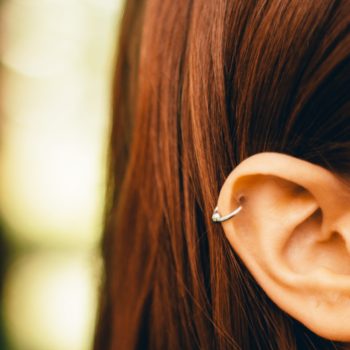The hair has a number of important roles, including physical protection, thermoregulation, sweat loss, sebum and pheromone production, as well as being a source of social and sexual communication. As a result, hair loss can lead to deep psychosocial discomfort. The feeling of losing a lot of hair is very common and usually affects a lot of people during seasonal changes. In these cases, the lost hair almost always grows back in a few months. However, there are some cases in which alopecia is induced by long therapy or pathological factors that prevent its regrowth. We talked about it with Dr. Elena Guanziroli, dermatologist at Humanitas.
Possible causes of hair loss
Chemotherapy-induced alopecia
Chemotherapy-induced alopecia is a common and highly visible side effect of cancer treatment, although the likelihood of developing it and its severity depend on the type of drug used and its dosage.
Chemotherapy works by eliminating cancer cells that, by nature, grow very fast. Unfortunately, some healthy cells, such as hair cells, behave in the same way even without having pathological connotations. By becoming the target of chemotherapy, hair follicles interrupt their normal cycle and begin to develop hair and hair directly in the catagen stage (the third and final stage of hair’s life) and the hair shaft does not develop properly, breaks and falls. The good news is that when chemotherapy is over, the follicles regenerate normally and the healthy and new hair develops as before the disease. The bad news is that in the short term chemotherapy causes almost total hair loss.
Alopecia areata
Sometimes it also happens that a person’s immune system attacks the cells of the growing hair bulb. This autoimmune disease, called alopecia areata, is characterized by an alteration in the cycle of hair follicles, which prematurely enter the terminal phase called telogen. The hair breaks and falls out, forming unsightly patches scattered on the scalp. In this case, the hair follicles regenerate when the immune system is under control and functioning normally.
The area affected by alopecia can initially be small, then expand and affect large areas of the head or the entire head. Alopecia areata can occur at any age, but often occurs in the childhood.
Alopecia areata is not related to a more severe condition known as scarring alopecia, where the immune system attacks stem cells destroying the hair bulb, which results in permanent hair loss.
Androgenetic alopecia
Androgenetic alopecia, more commonly known as baldness, is the most common form of hair loss. It is due to a progressive miniaturization of the hair follicle under hormonal stimulus. It mainly affects men, with an initial hair loss at the level of the temples and vertex.
This phenomenon, in mild form, is very frequent with age, especially after menopause, even in women.
In their case, there is a thinning mainly localized at the top, often less marked than the male, but more generalized.
The diagnosis of androgenetic alopecia is clinical (affected area, characteristics of diameter and quality of the hair) and dermatoscopic. In some cases, especially in female forms (FPHL, female pattern hair loss), a hormonal evaluation may also be necessary.
Androgenetic alopecia is an irreversible, progressive and fattening condition in the absence of treatment.
Treatments and drugs
Men who are prone to hair loss can make use of a lotion containing an ingredient called minoxidil. This active ingredient, originally developed as Regaine, counteracts androgenetic alopecia in both men and women. However, when used correctly, twice a day, and massaged deep into the scalp, it slows hair loss and promotes hair growth. The other molecule currently approved for hair loss is finasteride. The use of this active ingredient is only approved for men because it acts on the follicles sensitive to testosterone. One of the most common side effects is the loss of libido.
What about surgery?
Another way to combat hair loss is to implant hair follicles from the sides and back of the scalp to the top of the head. The results of hair transplantation in men with androgenetic alopecia are better if you associate therapy with finasteride 1mg/day.
It inhibits the miniaturization and subsequent loss of untransplanted hair surrounding the transplant area, improving the overall density of the scalp.
Another technique, mostly unfavorable, is scalp reduction and consists of cutting the bald scalp and suturing the remaining skin to reduce the hairless area. The success of a transplant depends on how much healthy hair the patient has available for the transplant and on the patient’s expectations.
What are the most advanced and recommended techniques today?
“To date, the most advanced techniques of treatment of androgenetic alopecia include surgical therapies, such as autologous hair transplantation – said the specialist -. This technique, performed by a dermatologist expert in trichology or by a plastic surgeon, consists of taking a strip of hair in the posterior region of the head (technique FUT or STRIP) and replant them in the most thinned areas. Alternatively, the individual hair follicles can be taken directly, which will then be reinstated in the areas with lower density (FUE technique). An innovative infiltrative stimulation technique based on the use of PRP or platelet-rich plasma has been available for some years now. After applications in dentistry, orthopedics and aesthetic medicine, now PRP is proposed to thicken the scalp. In fact, several studies have shown that at the level of the bulb there are stem cells equipped with receptors for growth factors. PRP, being an excellent source of growth factors, can be used to stimulate these stem cells. It can be used as a supportive therapy in transplantation, promoting a strengthening of transplanted hair, as well as promoting the strengthening and regrowth of hair in patients with androgenetic alopecia. As PRP treatment has almost no side effects, it could be an alternative to traditional medical therapies, especially in young people and women with an initial pattern of androgenetic thinning. With regard to alopecia areata, on the other hand, a drug is being studied, to be applied locally, based on innovative principles that act on the immune system – continued Dr. – Ruxolitinib and tofacitinib, are two JAK-inhibitors, substances that act on key factors for the development of immune responses. Approved by the FDA – US Food and Drug Administration – to treat rheumatoid arthritis and some diseases affecting the bone marrow, they have shown promising results in alopecia areata. The research is working on products based on these two substances but for topical use, to be applied in areas affected by hair loss, so as to minimize side effects”.








